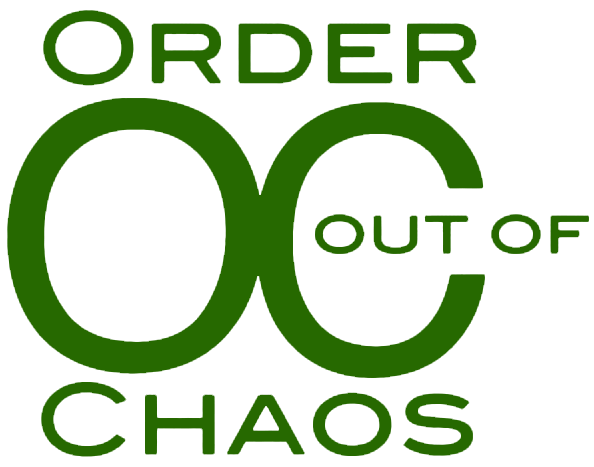Q: How Can I Face My Hoarding Tendencies Head On?
Hoarding tendencies are common among adults with ADHD who are easily overwhelmed by piles of clutter and who attach emotions to stuff that triggers memories. But it’s not healthy to feel suffocated by your possessions, so use these expert tips for simplifying your life from the inside out.
Q: “I am trying to overcome my hoarding behaviors and extreme ADHD. I can help others, but I’m bad at helping myself. I’m recently divorced after 36 years, my artist mother just died, and I’ve moved to a condo from my big house. My new place is a wreck, and I am paying for four 10′ x 10′ storage units containing so much stuff, including a huge number of my parents’ photo albums. Help!” — RestonMom
Hi RestonMom:
I applaud you for knowing that you are ready to start and that you need help to do so. Knowing you need help is the first step to getting started! I have worked with many individuals with hoarding behaviors, and I understand all too well the frustration, pain, and shame that comes with hoarding as well as the inability to work through it on your own.
So rule #1. Be gentle with yourself. You have experienced some major trauma in your life – your divorce, your mom’s death, even downsizing to a new home. Those experiences take their toll and need to be worked through. Remember, it’s not about your stuff! It’s about the “stuff” behind the stuff! This is my gentle reminder to you that this will not be a quick fix. It didn’t take you hours, days, or even months to get into this situation, so you cannot expect the same when working to get out of it.
Since I don’t know all the circumstances – are there additional emotional triggers that led to the hoarding behavior? How long has this behavior been going on? What do you hoard? Even the level of hoard (check out the Institute for Challenging Disorganization’s Clutter Hoarding Scale to help you evaluate. It’s free!) – I’m going to focus on the best way for you to approach this process. But before we dive in, I will mention three important points:
First, you need to understand that “hoarding is not defined by the number of possessions you have, but by how the acquisition and management of those possessions affects you.”
I always ask my clients to name their “10s” — those non-negotiable items that they couldn’t bear to let go of. But here’s the catch: not everything can be a 10. Because if everything is a 10, then nothing is a 10. And that is the true definition of someone who hoards. They assign the same level of significance to everything — whether it is an old grocery list or their marriage certificate — and they can’t differentiate anything’s level of importance.
So to get you started, try making a list of all your possessions by category. Books, photo albums, clothing, and so on. Then give each of those categories a number from one to ten. If old magazines, cookbooks, and toys are a “one,” (meaning they are easy for you to part with) then start by eliminating those items first. Beginning with items that don’t fill you with emotion or anxiety is a wonderful way to start the process. It allows you to build that “detachment” muscle as you move toward items that will be harder. Remember to tread lightly as you build momentum.
Second, define your short- and long-term goals for limiting the hoard in your home. What do you envision your home looking like after the process? Perhaps your short-term goal is to be able to clear the dining room table so you can eat on it. Your long-term goal might be to only have one storage unit filled with possessions you truly want AND need.
Next, write down these goals in a notebook. By defining the goals and writing them down, you will eliminate the internal back-and-forth dialogue and give yourself a solid goal to work toward. What does that look like? Say you are struggling to make a decision to get rid of an item in your home. You can refer back to your goals by asking, “How is keeping this… going to further my goal of…?” I would also suggest writing down any decisions you make. Logging small successes leads to bigger ones!
Third, have you thought of hiring a professional to help you? A professional organizer trained in hoarding behaviors could really help you define your goals, put a plan in place, and guide you through the tough decision-making process. And if you are concerned they will get bossy or judgmental, please trust me when I say they will not! They will never go faster or further than you want, discard anything you are not willing to trash, or pass judgement or criticism.
If you are interested, reach out to The National Association of Productivity and Organizing Professionals (NAPO.NET) OR The Institute for Challenging Disorganization (challengingdisorganization.org). Their websites are set up so you can easily find a professional by skill set and location.
Good Luck!
This article was originally published by ADDitude Magazine where Leslie Josel writes a weekly column called “Dear ADHD Family Coach”. She answers reader’s most pressing questions on a whole range of ADHD parenting topics. CLICK HERE to submit a question for Leslie.
WANT MORE TIPS AND TOOLS LIKE THESE?
Sign up for our popular monthly newsletter and have our latest articles, resources and events delivered directly to your inbox. Trust us. You will LOVE it!
SIGN ME UP NOW!
What are the true costs of clutter?
You might be surprised! Check out our article, Clutter Costs, for eye opening data about clutter.

